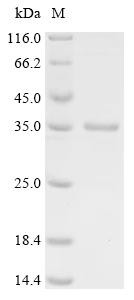Cookie-Einstellungen
Diese Website benutzt Cookies, die für den technischen Betrieb der Website erforderlich sind und stets gesetzt werden. Andere Cookies, die den Komfort bei Benutzung dieser Website erhöhen, der Direktwerbung dienen oder die Interaktion mit anderen Websites und sozialen Netzwerken vereinfachen sollen, werden nur mit Ihrer Zustimmung gesetzt.
Konfiguration
Technisch erforderlich
Diese Cookies sind für die Grundfunktionen des Shops notwendig.
"Alle Cookies ablehnen" Cookie
"Alle Cookies annehmen" Cookie
Ausgewählter Shop
CSRF-Token
Cookie-Einstellungen
FACT-Finder Tracking
Individuelle Preise
Kundenspezifisches Caching
Session
Währungswechsel
Komfortfunktionen
Diese Cookies werden genutzt um das Einkaufserlebnis noch ansprechender zu gestalten, beispielsweise für die Wiedererkennung des Besuchers.
Facebook-Seite in der rechten Blog - Sidebar anzeigen
Merkzettel
Statistik & Tracking
Endgeräteerkennung
Kauf- und Surfverhalten mit Google Tag Manager
Partnerprogramm

Bei Fragen nutzen Sie gerne unser Kontaktformular.
Bestellen Sie auch per E-Mail: info@biomol.com
Größere Menge gewünscht? Bulk-Anfrage
Bestellen Sie auch per E-Mail: info@biomol.com
Größere Menge gewünscht? Bulk-Anfrage
Organism: Homo sapiens (Human). Source: E.coli. Expression Region: 4417-4676aa. Protein Length:... mehr
Produktinformationen "E3 ubiquitin-protein ligase MYCBP2 (MYCBP2), partial, human, recombinant"
Organism: Homo sapiens (Human). Source: E.coli. Expression Region: 4417-4676aa. Protein Length: Partial. Tag Info: C-terminal 6xHis-tagged. Target Protein Sequence: ATSLKQDADD MCMICFTEAL SAAPAIQLDC SHIFHLQCCR RVLENRWLGP RITFGFISCP ICKNKINHIV LKDLLDPIKE LYEDVRRKAL MRLEYEGLHK SEAITTPGVR FYNDPAGYAM NRYAYYVCYK CRKAYFGGEA RCDAEAGRGD DYDPRELICG ACSDVSRAQM CPKHGTDFLE YKCRYCCSVA VFFCFGTTHF CNACHDDFQR MTSIPKEELP HCPAGPKGKQ LEGTECPLHV VHPPTGEEFA LGCGVCRNAH. Purity: Greater than 90% as determined by SDS-PAGE. Endotoxin: n/a. Biological Activity: n/a. Form: Liquid or Lyophilized powder. Buffer: If the delivery form is liquid, the default storage buffer is Tris/PBS-based buffer, 5%-50% glycerol. If the delivery form is lyophilized powder, the buffer before lyophilization is Tris/PBS-based buffer, 6% Trehalose, pH 8.0. Reconstitution: We recommend that this vial be briefly centrifuged prior to opening to bring the contents to the bottom. Please reconstitute protein in deionized sterile water to a concentration of 0.1-1.0 mg/mL.We recommend to add 5-50% of glycerol (final concentration) and aliquot for long-term storage at -20 °C/-80 °C. Our default final concentration of glycerol is 50%. Customers could use it as reference. Storage: The shelf life is related to many factors, storage state, buffer ingredients, storage temperature and the stability of the protein itself. Generally, the shelf life of liquid form is 6 months at -20 °C/-80 °C. The shelf life of lyophilized form is 12 months at -20 °C/-80 °C. Notes: Repeated freezing and thawing is not recommended. Store working aliquots at 4 °C for up to one week. Relevance: Atypical E3 ubiquitin-protein ligase which specifically mediates ubiquitination of threonine and serine residues on target proteins, instead of ubiquitinating lysine residues. Shows esterification activity towards both threonine and serine, with a preference for threonine, and acts via two essential catalytic cysteine residues that relay ubiquitin to its substrate via thioester intermediates. Interacts with the E2 enzymes UBE2D1, UBE2D3, UBE2E1 and UBE2L3. Plays a key role in neural development, probably by mediating ubiquitination of threonine residues on target proteins (Probable). Involved in different processes such as regulation of neurite outgrowth, synaptic growth, synaptogenesis and axon degeneration. Required for the formation of major central nervous system axon tracts. Required for proper axon growth by regulating axon navigation and axon branching: acts by regulating the subcellular location and stability of MAP3K12/DLK. Required for proper localization of retinogeniculate projections but not for eye-specific segregation. Regulates axon guidance in the olfactory system. Involved in Wallerian axon degeneration, an evolutionarily conserved process that drives the loss of damaged axons: acts by promoting destabilization of NMNAT2, probably via ubiquitination of NMNAT2. Catalyzes ubiquitination of threonine and/or serine residues on NMNAT2, consequences of threonine and/or serine ubiquitination are however unknown. Regulates the internalization of TRPV1 in peripheral sensory neurons. Mediates ubiquitination and subsequent proteasomal degradation of TSC2/tuberin. Independently of the E3 ubiquitin-protein ligase activity, also acts as a guanosine exchange factor (GEF) for RAN in neurons of dorsal root ganglia. May function as a facilitator or regulator of transcriptional activation by MYC. Acts in concert with HUWE1 to regulate the circadian clock gene expression by promoting the lithium-induced ubiquination and degradation of NR1D1. Reference: n/a. Function: nan
| Schlagworte: | Myc-binding protein 2, Protein associated with Myc, E3 ubiquitin-protein ligase MYCBP2, Recombinant Human E3 ubiquitin-protein ligase MYCBP2 (MYCBP2), partial |
| Hersteller: | Cusabio |
| Hersteller-Nr: | EP015272HU |
Eigenschaften
| Anwendung: | Activity not tested |
| Konjugat: | No |
| Wirt: | E.coli |
| Spezies-Reaktivität: | human |
| MW: | 36.3 kD |
| Reinheit: | >90% (SDS-PAGE) |
Datenbank Information
| KEGG ID : | K10693 | Passende Produkte |
| UniProt ID : | O75592 | Passende Produkte |
| Gene ID : | GeneID 23077 | Passende Produkte |
Handhabung & Sicherheit
| Lagerung: | -20°C |
| Versand: | +4°C (International: +4°C) |
Achtung
Nur für Forschungszwecke und Laboruntersuchungen: Nicht für die Anwendung im oder am Menschen!
Nur für Forschungszwecke und Laboruntersuchungen: Nicht für die Anwendung im oder am Menschen!
Hier kriegen Sie ein Zertifikat
Loggen Sie sich ein oder registrieren Sie sich, um Analysenzertifikate anzufordern.
Bewertungen lesen, schreiben und diskutieren... mehr
Kundenbewertungen für "E3 ubiquitin-protein ligase MYCBP2 (MYCBP2), partial, human, recombinant"
Bewertung schreiben
Loggen Sie sich ein oder registrieren Sie sich, um eine Produktbewertung abzugeben.
Zuletzt angesehen

